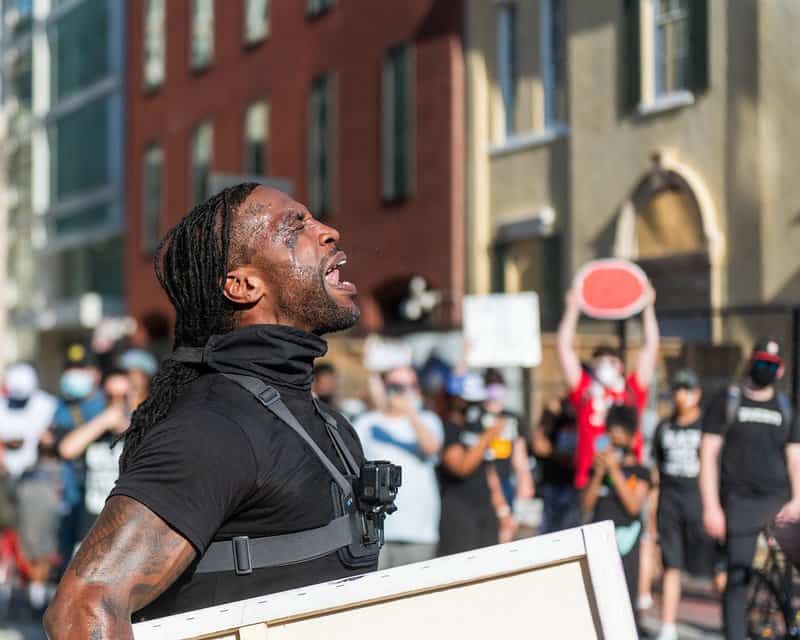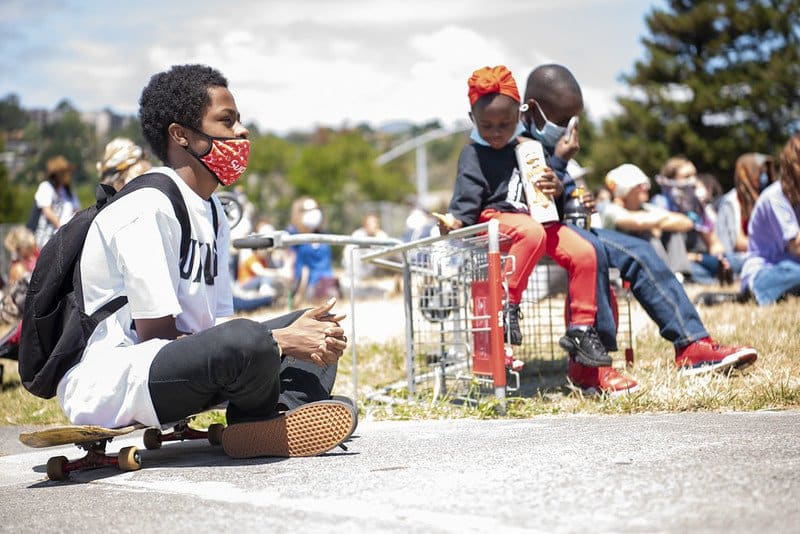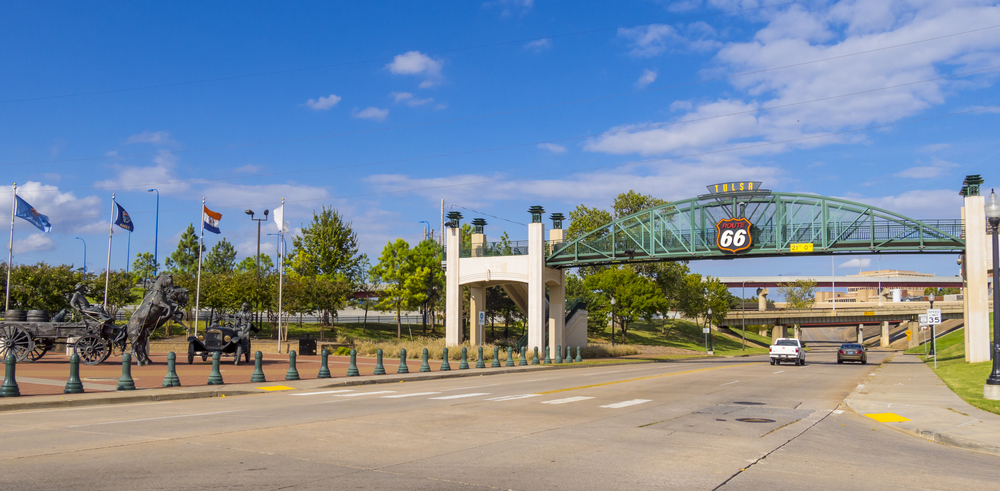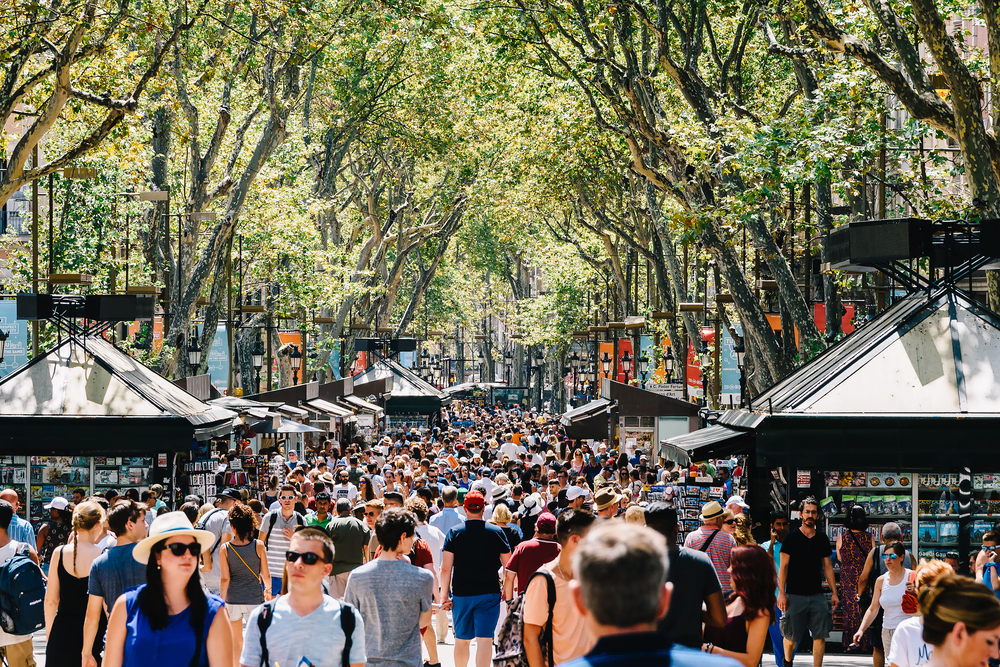381 days.
That’s how long the Montgomery Bus Boycott, the first large-scale action against segregation in the United States, took to achieve its goal. On December 5, 1955, as pretty much every school kid knows, Rosa Parks stayed in her seat. On December 20, 1956, the Supreme Court ruled that segregating public buses was unconstitutional.
28 days.
That’s how long it has been since Derek Chauvin refused to take his knee off of George Floyd’s neck and murdered him in the plain light of day. Since then, there have been uprisings in cities and towns across America, and globally, too. Major thoroughfares have been stopped in their tracks. Confederate statues have been thrown into rivers. Books about racial justice have rocketed up the bestseller list. Black trans women, the most vulnerable of all Americans to state violence, have been centered in marches 15,000 strong. The call, this time around, is for police abolition.
Like the bus boycotts in the mid 1950s, or the uprisings of the late 1960s, Black visionaries are re-imagining the country as it has never been. But this time around, they are joined by an unprecedented number of accomplices.

According to a recent poll: “Two-thirds of U.S. adults say they support the movement, with 38 percent saying they strongly support it. This sentiment is particularly strong among black Americans, although majorities of white (60 percent), Hispanic (77 percent) and Asian (75 percent) Americans express at least some support.”
These uprisings have gone global, which, as Sisonke Msimang points out, proves erroneous the seductive idea that only the cracked melting pot that is America has a “race problem.” “The protesters have successfully framed racism as an existential question rather than simply a matter to be shrugged off,” she writes. “By insisting that Black Lives Matter wherever black people may be, this generation of activists has transformed a local tragedy into a global fight.”
And yet, even as the struggle expands in energy, numbers and geographic reach, there is already a creeping anxiety that this moment will fade and disperse — that some of the newcomers to the movement might gradually begin reverting back to their old unconscious ways, to their socially distanced, soporific summers. People are beginning to ask: How do we sustain this movement? How do we make sure that people — especially those who are new to taking this kind of stand for racial justice — don’t burn out and wander away?

History shows that we need small wins, alongside grand plans, and we need coalitions that transcend transactional activism.
The wins are already coming: Minneapolis’ city council passed a resolution to replace its police department with a community-centric model (on hometown hero Prince’s birthday, no less); police budgets are being slashed; school contracts with local police forces are being cancelled all over the country, including in Denver and Portland; no-knock warrants were banned in Louisville, where Breonna Taylor was killed by officers who raided her home with this type of warrant (the police who murdered her have still not been arrested); the use of tear gas and chokeholds is being banned all over the country.
These wins matter, not because they mean the work is done, but because they mean the work is working. Abolition is a long game. You don’t just wave a magic wand and create a society where harm is handled using restorative, rather than punitive, practices, not to mention where the sources of so much harm (alienation, poverty, disinvestment) are eradicated. Or, as Reverend William Barber puts it: “While realism cannot determine the goals of our faith, it must shape our strategy in movements of moral dissent.”
Abolition is not just about police. It’s about a different world. And building that world is going to take sophisticated strategies designed by the wisest movement minds we’ve got. As longtime abolitionist Mariame Kaba writes in The New York Times: “People like me who want to abolish prisons and police… have a vision of a different society, built on cooperation instead of individualism, on mutual aid instead of self-preservation. What would the country look like if it had billions of extra dollars to spend on housing, food and education for all? This change in society wouldn’t happen immediately, but the protests show that many people are ready to embrace a different vision of safety and justice.”

The women who conceived of and led the Montgomery Bus Boycott — in particular, Jo Ann Robinson, who is rarely credited — didn’t have, as their ultimate goal, a bus system where they could sit in any seat they pleased. They wanted nothing less than the end of Jim Crow, mass segregation and codified racism. They wanted to restore Black Americans’ rights and dignity, and in so doing, restore the humanity of white Americans who were, as Wendell Berry puts it, “spiritually disfigured,” by the racism they perpetuated (and still do).
Achieving these transformative goals, however, required a surgical approach. They coordinated carpools to keep Montgomery’s 40,000 Black commuters — who made up the majority of passengers — off the buses. They collaborated with ministers. They held regular mass meetings to keep people informed and engaged.
Making chokeholds illegal or getting police out of schools, of course, is the absolute barest minimum of what those who have been most directly affected by state violence deserve. But these small wins are meaningful beyond the regulatory and policy tweaks they forge. They are bursts of propellant that move a long and grueling struggle onward.
Weighed down by negative news?
Our smart, bright, weekly newsletter is the uplift you’ve been looking for.They are also like pain relief — think of a spine battered and brittle that receives an epidural injection. We need to celebrate these moments in the midst of so much tragedy. Joy is the lifeblood of a movement, just as much as rage. The victories prove to those of us — especially the less directly affected, and therefore, the less imaginative — just how possible another world is.
The joy solidifies an anti-racist identity in a way that rage, alone, cannot. Black activists, indigenous folks, people of color and those who have fought for a transformation of how we think about disability and gender identity, among so much else, know this well.
White people, not so much. One of the enduring hurdles to our sustained involvement in anti-racist struggles has been over-intellectualism. We don’t tend to build an identity around both the anger and pleasure we find in anti-racist activism, to really move our commitment down from our heads to our bodies, to our souls, even.
It’s easy to watch a documentary like 13th or read a book like White Fragility, and feel, at first, galvanized, but then inadvertently take a left turn into overwhelmed white silence. It’s too daunting, too painful. Our communities are so deeply segregated. We think we’re going to screw it up. It was a powerful moment, we tell ourselves, but it’s really not our place.
Let us be different this time around, white friends. Let us move beyond the dog-eared pages and the Instagram posts and find ourselves so in love with the feeling of being a part of something larger than us, something that de-centers us, and restores our own humanity in the process, that we can’t not show up. Let anti-racism become, not a side project, but rightfully intrinsic to our own survival.
As James Baldwin puts it in The Fire Next Time: “Love takes off the masks that we fear we cannot live without and know we cannot live within. I use the word ‘love’ here not merely in the personal sense but as a state of being, or a state of grace — not in the infantile American sense of being made happy, but in the tough and universal sense of quest and daring and growth.”









